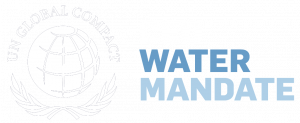This appendix provides catchment case studies in which stakeholders determined the current and desired conditions for the catchment and the gap between the two conditions.
Mississippi/Atchafalaya River Basin: One example of setting a desired condition, and developing a plan based on this condition, is the Gulf Hypoxia Action Plan. This plan was created at the request of the federal government to address the water quality challenge of excess nutrients in the Mississippi River Basin and the related hypoxic “dead zone” in the Gulf of Mexico. A task force was created to develop a plan to address this challenge, including agreeing on a shared “condition” for the basin. The desired condition for the Mississippi/Atchafalaya River Basin and Gulf of Mexico is comprised of three components: a reduction in size (by surface area) of the Gulf of Mexico hypoxic zone (coastal goal); restored lands and waters within the basin with a focus on human health and aquatic life (catchment goal); and improved communities and economic conditions across the basin (quality of life goal). The difference between the current state of the basin and this future condition—the “gap”—provided a basis for establishing goals for reduction in nutrient loading from across the river basin, which formed the foundation of an action plan. See the action plan for more information about this process and the actions that have been taken as a result of the plan.21
Total Maximum Daily Load: Another example of establishing a desired condition and using it as a foundation for setting targets is the Total Maximum Daily Load planning process.22 Under the U.S. Clean Water Act, when a waterway is found to be “impaired,” or does not meet certain water quality standards, a process may be set in motion to establish the total allowable load of a specific pollutant into that waterway. The desired condition is that the waterway meets the established water quality standard, becoming, for example, “swimmable and fishable.” The desired condition is quantified by the maximum daily loading of the pollutant that would let the water body meet this standard. The gap assessment between the current loading and the total maximum daily load provides a quantitative indication of how much the total loading needs to be reduced to meet the water quality standard. This difference, known as the “delta,” forms the basis for action in terms of specific reductions in loading for actors in the catchment who contribute to the total pollutant load.
California Groundwater Management: In the midst of an extreme drought in 2014, California passed the Sustainable Groundwater Management Act that requires all medium- and high-priority groundwater basins (as determined by the state) to develop and implement a sustainable groundwater management plan.23 In this case, the desired condition for the state and water users in each groundwater basin is sustainable groundwater use. Sustainable groundwater use is defined by the avoidance of six “undesirable results:” chronic lowering of groundwater levels, reduction of groundwater storage, seawater intrusion, degraded water quality, land subsidence, and depletion of interconnected surface water. The gap between current annual groundwater use and a sustainable level of annual groundwater use is the volume by which the water users accessing the aquifer must reduce their total use. This “gap” serves as a starting point for development of an allocation and action plan for moving the groundwater basin into compliance with the Sustainable Groundwater Management Act.
Murray-Darling Basin’s Water Resource Plans: Over the years, the combination of natural droughts and increasing water use by agriculture, industry, and municipalities has led to declines in the health of the Murray-Darling Basin in Australia. In 2012, a newly developed basin plan called for sustainable diversion limits on how much water can be taken from the basin by each water user group while leaving enough water instream to sustain natural ecosystems. Given that water use varies over the year, the basin plan focuses on trends over time as well as individual water years and sets usage thresholds. Water diversions are then monitored to ensure compliance.24
The Western Cape Province’s Sustainable Water Management: Following the drought in 2015-2017, the Western Cape Province in South Africa faced a new “normal” with higher water prices in urban areas, less availability of water resources, and inequitable access to water. The Western Cape Government and the National Department of Water Affairs collaborated to develop the Western Cape Sustainable Water Management Plan (2017-2022) outlining four goals to address water resiliency in the face of climate uncertainty. These goals were: enable effective co-operative governance and institutional planning for sustainable water management; enable sustainable water resources for growth and development; enable the integrity and sustainability of socio-ecological systems; and enable effective and appropriate information management, reporting, and awareness-raising of sustainable water management. The progress towards the desired outcomes will be monitored against a timeline using indicators and coordinated by governmental committees.25
Zambezi River Basin’s Integrated Water Resources Management Strategy: The Strategic Plan for the Zambezi Watercourse was developed through a multi-stage process including analysis of the current conditions of the Zambezi River in Zimbabwe, determination of future development options, and preparation of the Strategic Plan. The analysis of the current state was informed by data from existing national and regional sectoral plans and infrastructure inventories. The strategy was constructed around four challenges with corresponding actions to meet the overall objective of equitable and sustainable utilization of water for social and environmental justice, regional integration, and economic benefit for present and future generations. The four challenges are: integrated and coordinated water resources development, environmental management and sustainable development, adaptation to climate change, and basin-wide coordination and integration.26
